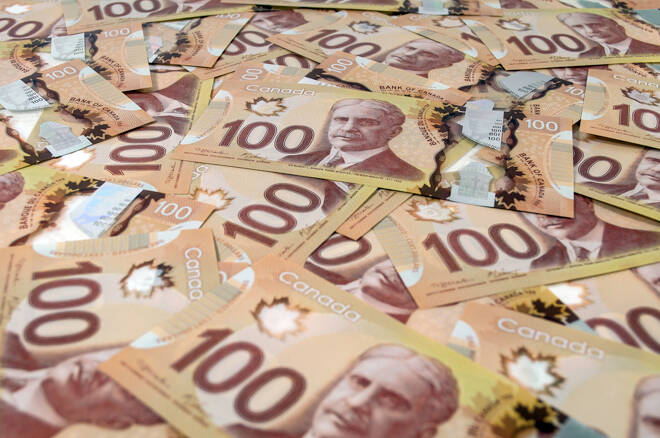Advertisement
Advertisement
USD/CAD: Loonie Snaps Two-Day Losing Streak on Strong Inflation Data
By:
The Canadian dollar snapped its two-day losing streak against its U.S. counterpart on Wednesday as higher oil prices and better-than-expected July inflation data, which registered its biggest jump in over a decade, supported the commodity currency to recovery from a four-week low.
In this article:
The Canadian dollar snapped its two-day losing streak against its U.S. counterpart on Wednesday as higher oil prices and better-than-expected July inflation data, which registered its biggest jump in over a decade, supported the commodity currency to recovery from a four-week low.
Today, the dollar to loonie conversion fell to 1.2593, down from Tuesday’s close of 1.263. The Canadian dollar had lost about 1% in July – the second biggest monthly drop since September 2020 and has weakened about 1.2% so far this month.
In July, inflation reached a record 3.7% year-over-year level, the highest rate since May 2011. Consumer prices rose as more of the economy reopened, allowing consumers to spend more. Over the previous year, consumer prices increased 3.1%.
Canada is the world’s fourth-largest exporter of oil, which edged higher as crude inventories declined for the week of Au 13. U.S. West Texas Intermediate (WTI) crude futures were trading 0.05% higher at $66.62 a barrel. Higher oil prices lead to higher U.S. dollar earnings for Canadian exporters, resulting in an increased value of the loonie.
The dollar index, a measurement of the dollar’s value relative to six foreign currencies, was trading nearly flat at 93.139 –not far from this year’s high of 93.437.
The greenback was also supported by hawkish remarks from the US Federal Reserve makers in the past which led markets to move forward with expectations of policy tightening. The Federal Reserve may move forward on tapering asset purchases and increase rates sooner if the inflation rate rises. This could effectively push the dollar up in value.
The risk that the world’s dominant reserve currency, the USD, rise over the coming year is high, largely driven by the Fed’s expectation of two rate hikes in 2023. A strengthening dollar and growing risk that the Federal Reserve would tighten its monetary policy earlier than expected would push the USD to CAD pair higher.
Despite Justin Trudeau’s decision to call an early election, China’s slower economic growth weighed on sentiment. China’s economic indicators caused a surprise decline in global shares, as investors reacted to the spreading Delta COVID-19 variant. As a major exporter of commodities, including oil, Canada’s dollar tends to be sensitive to the outlook for global economic growth.
About the Author
Vivek Kumarauthor
Vivek has over five years of experience in working for the financial market as a strategist and economist.
Did you find this article useful?
Latest news and analysis
Advertisement
